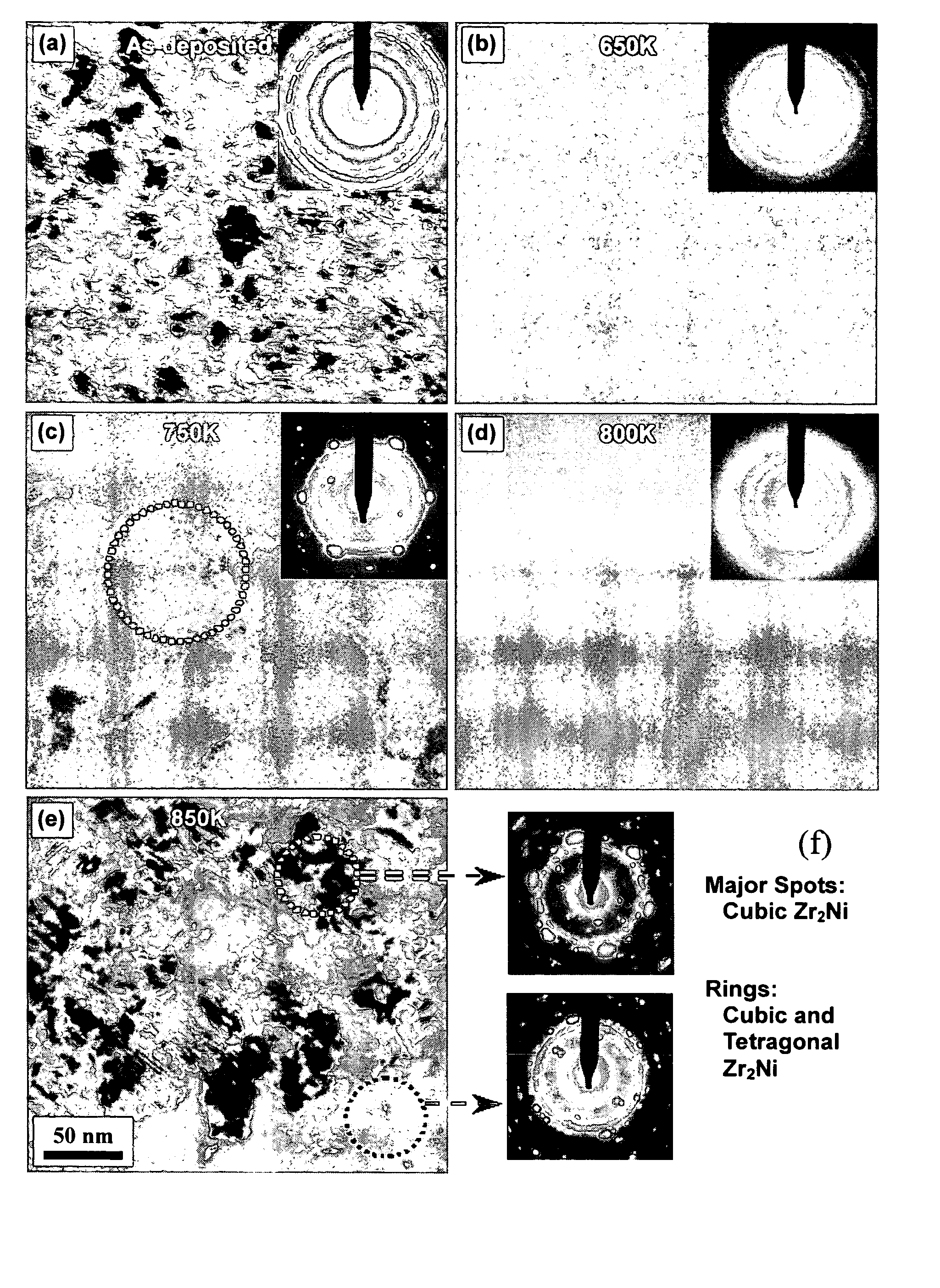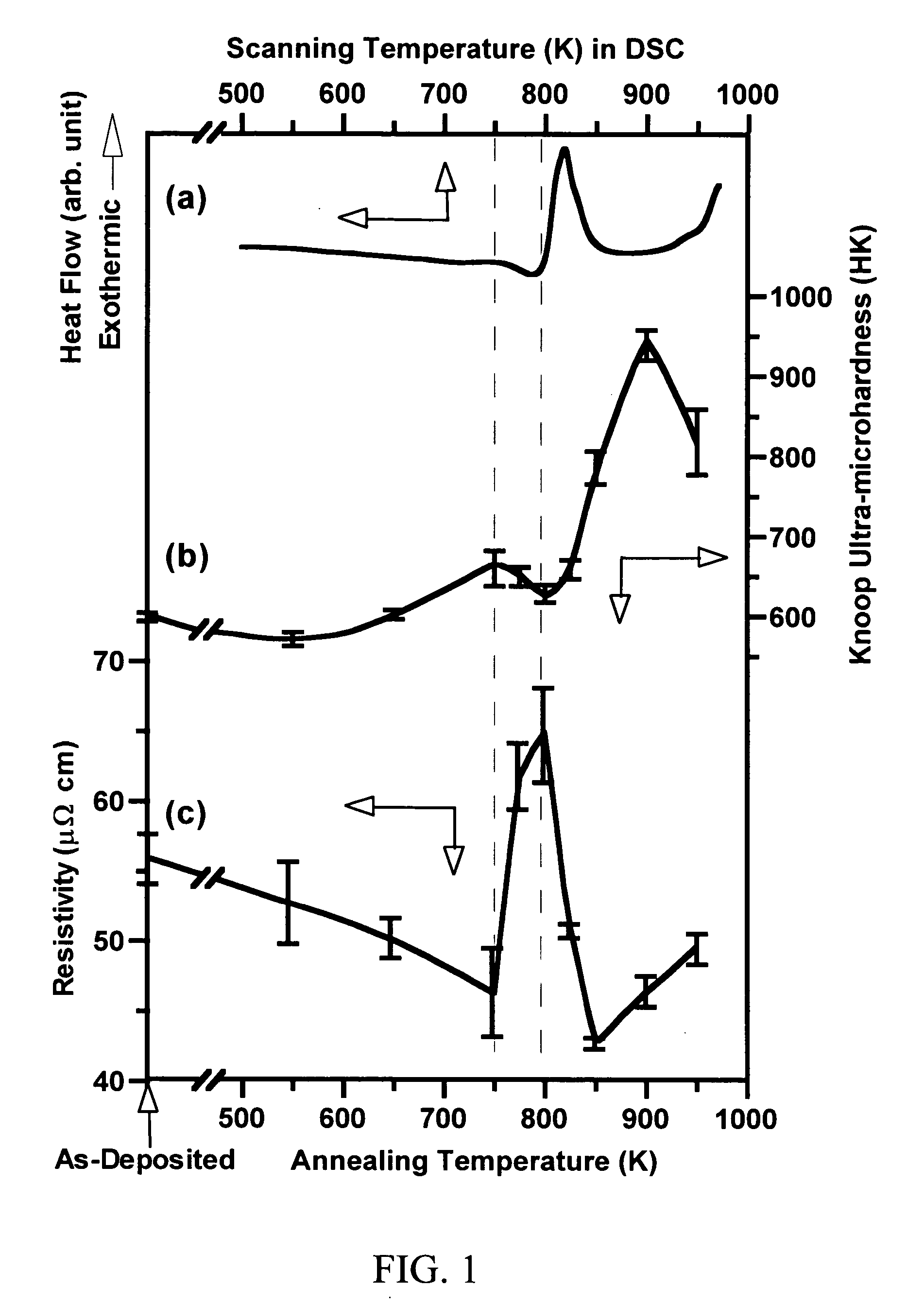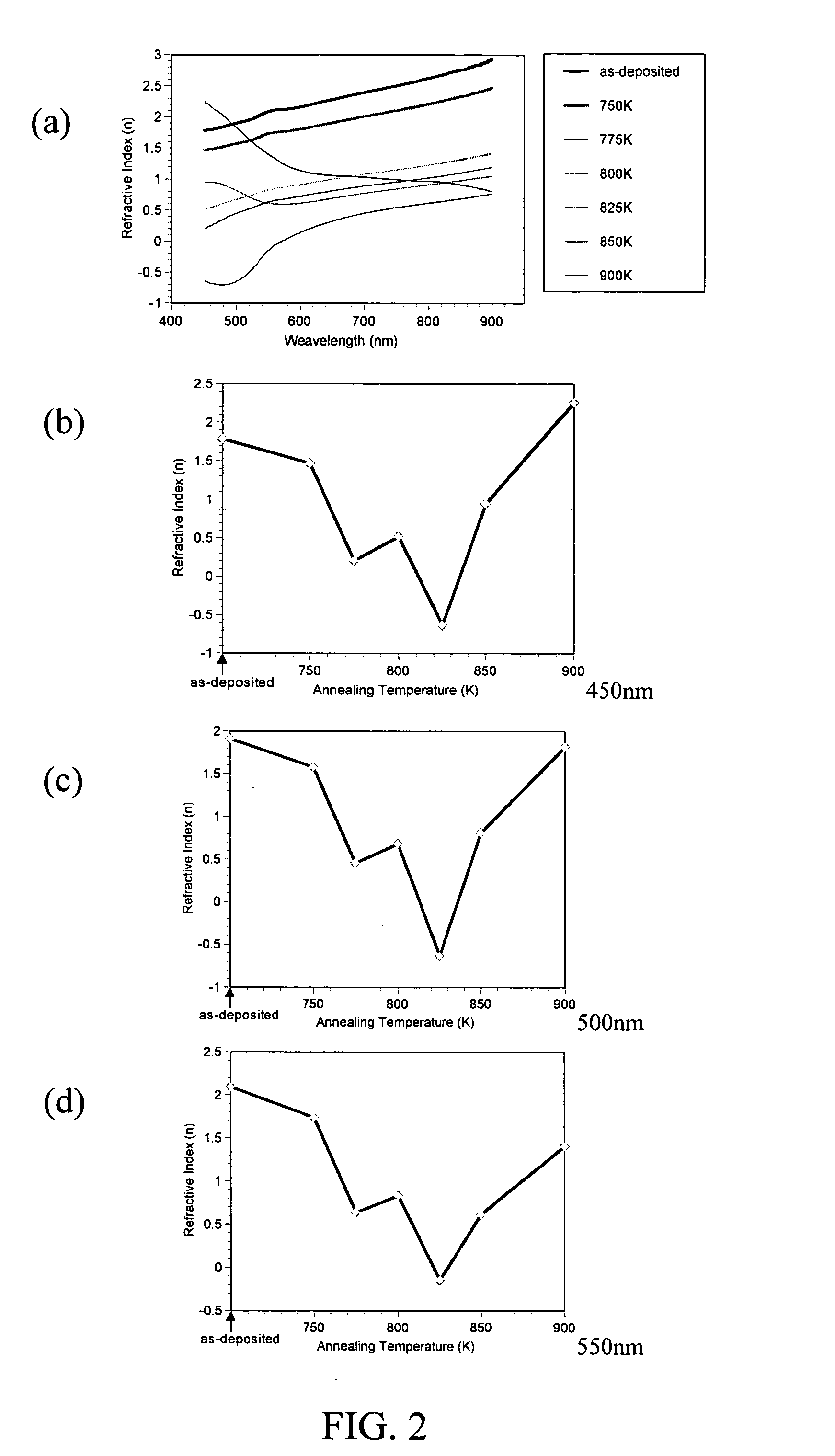Annealing-induced extensive solid-state amorphization in metallic films
- Summary
- Abstract
- Description
- Claims
- Application Information
AI Technical Summary
Benefits of technology
Problems solved by technology
Method used
Image
Examples
example 1
Zr-based thin film
Experimental Procedure
Zr-based quaternary alloy thin films of thickness 5-10 μm with a nominal composition of Zr47Cu31Al13Ni9 were deposited onto the well-cleaned glass substrate using an RF magnetron sputtering system in an argon atmosphere. The working pressure and RF power during sputtering were maintained at 3×10−3 torr and 100 W, respectively. The compositions of the films were measured using an electron probe for microanalysis (EPMA). The compositional fluctuation at various points on the film surface was also determined and found to be very small, (around 1%) which reveals the uniformity of the deposited films. The films were then annealed in a rapid thermal annealing (RTA) system in Ar at temperatures ranging from 550 to 950 K. To avoid contamination, the RTA system was pumped down to 10−3 torr range followed by purging with pure Ar for several times. For RTA, the samples were kept 60 seconds in holding time with the heating rate of 40 K / min. The crysta...
example 2
Fe-based thin films
Experimental procedure
The Fe65CO8Ni7T13Nb1B6 (atomic percent, at. %) thin films were prepared by anRF magnetron sputtering method. The Fe-Co-Ni-Ti-Nb-B target was an as-cast alloy. Thin films of thickness 0.5-10 μm were deposited on glass substrate. The deposition was carried out under the following conditions. The base vacuum was 10−7 Torr, Ar gas flow rate was 20 sccm, and the working pressure was 3×10−3 Torr. The power of 100 W was applied during the deposition. The film was annealed in Ar at a heating rate of 100 K / min and a holding time of 60 s at temperatures ranging from 673 to 1073 K. The annealing system was pumped down to the 10−3 Torr range followed by several purging with Ar. Compositions of thin films were determined by Electron Probe Microanalyzer. The thermal behavior of the film was determined using a differential scanning calorimeter (DSC) in Ar at a scanning rate of 100 K / min. The DSC film sample was delaminated from the glass without the aid...
PUM
| Property | Measurement | Unit |
|---|---|---|
| Temperature | aaaaa | aaaaa |
| Fraction | aaaaa | aaaaa |
| Fraction | aaaaa | aaaaa |
Abstract
Description
Claims
Application Information
 Login to View More
Login to View More - R&D
- Intellectual Property
- Life Sciences
- Materials
- Tech Scout
- Unparalleled Data Quality
- Higher Quality Content
- 60% Fewer Hallucinations
Browse by: Latest US Patents, China's latest patents, Technical Efficacy Thesaurus, Application Domain, Technology Topic, Popular Technical Reports.
© 2025 PatSnap. All rights reserved.Legal|Privacy policy|Modern Slavery Act Transparency Statement|Sitemap|About US| Contact US: help@patsnap.com



